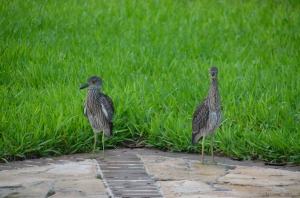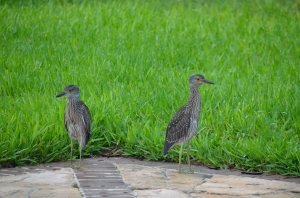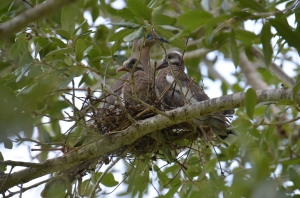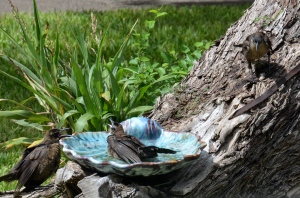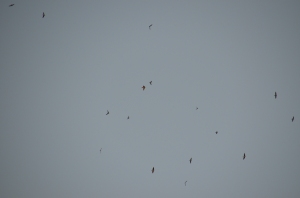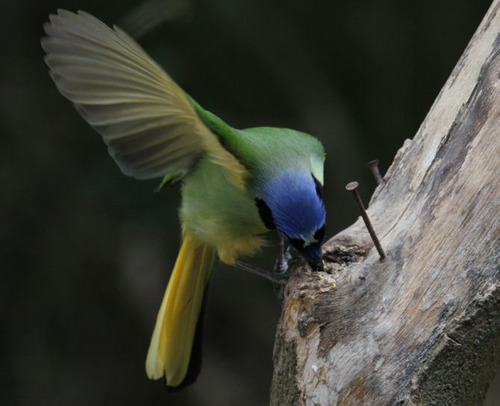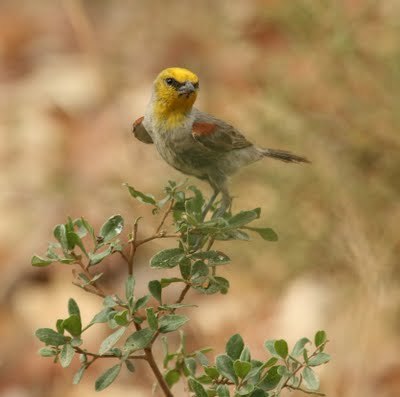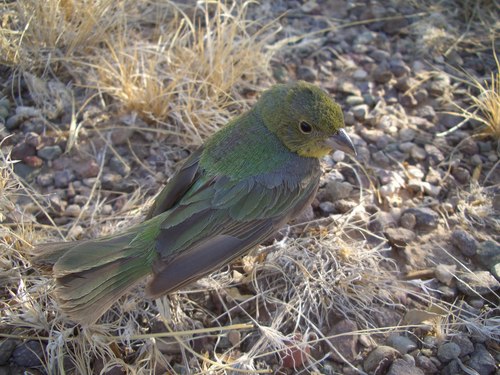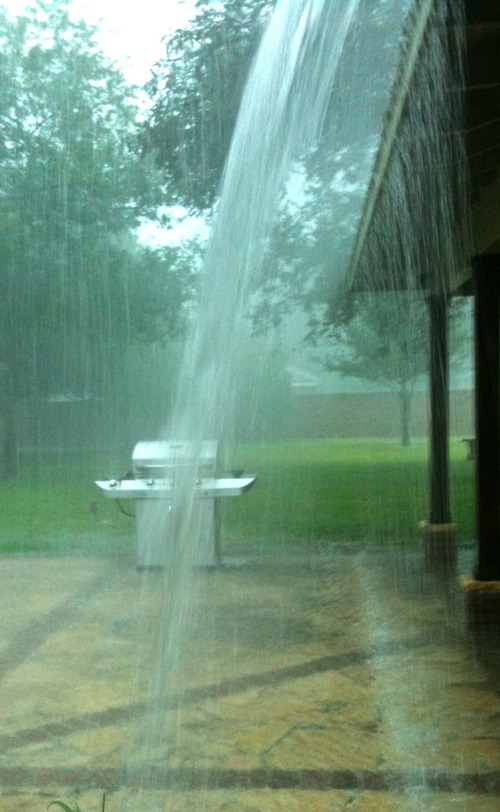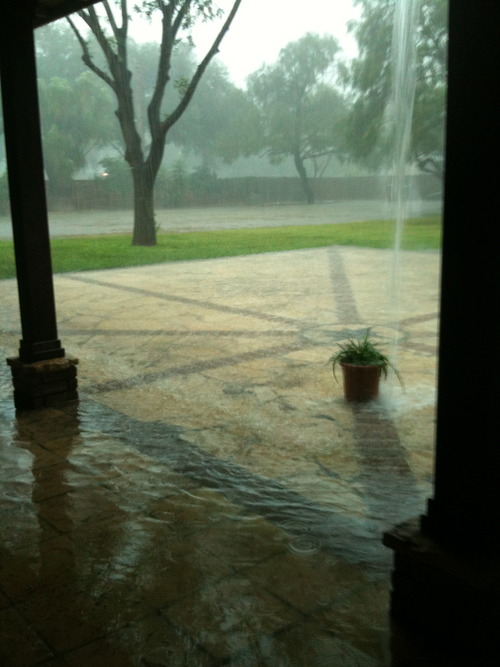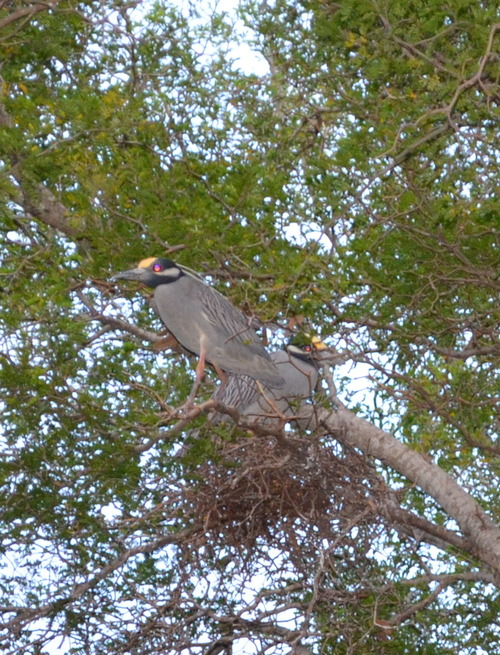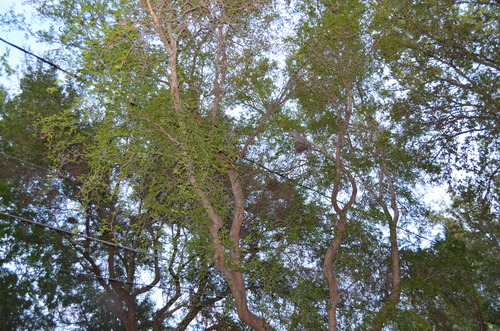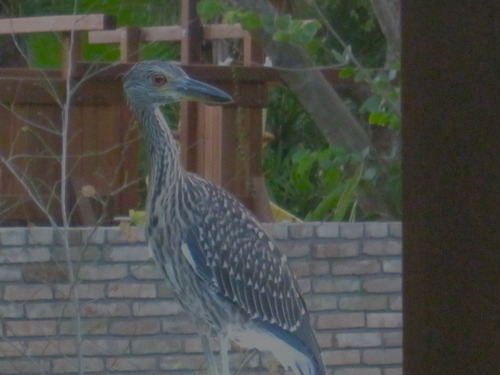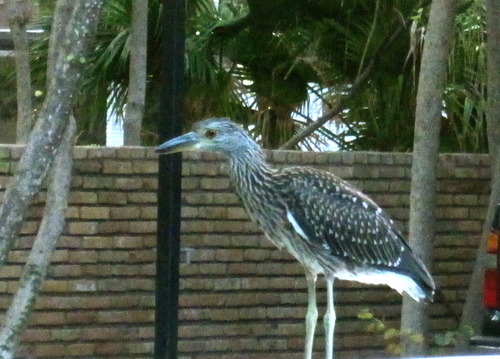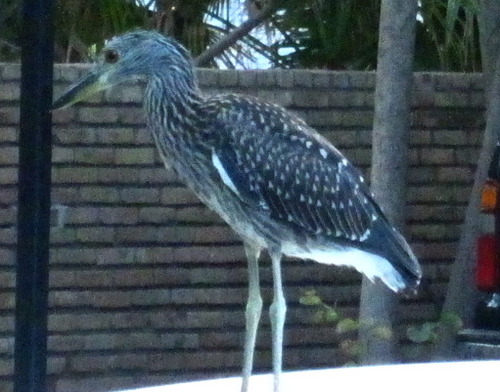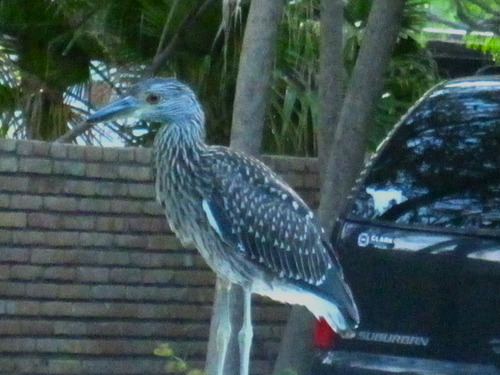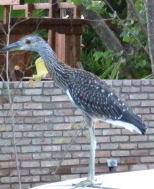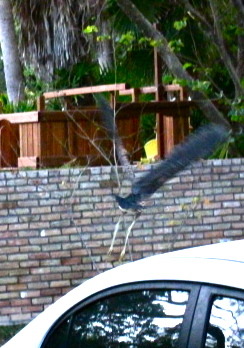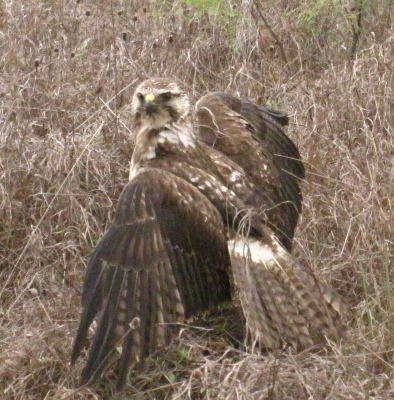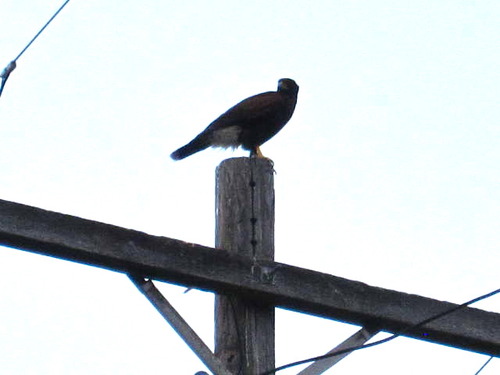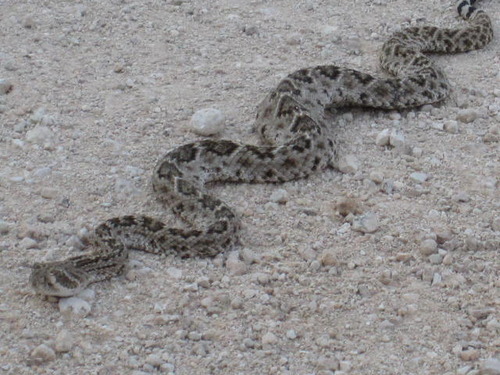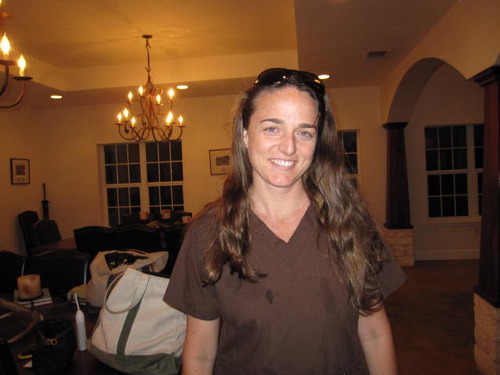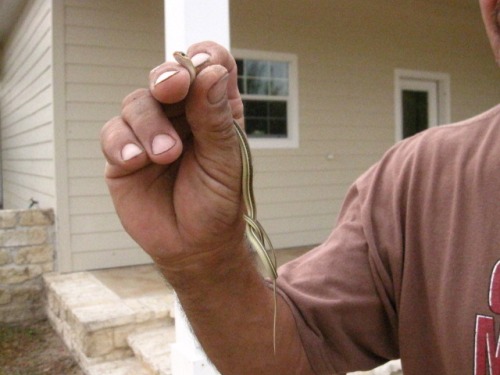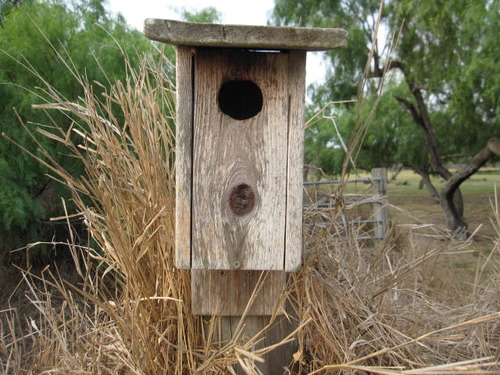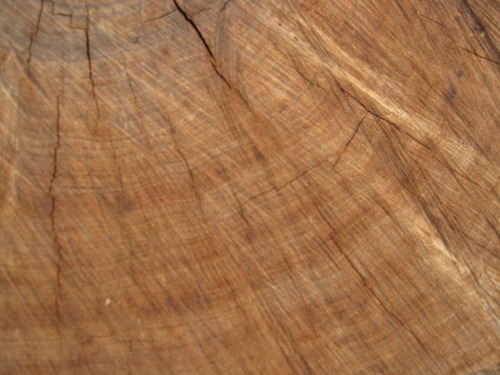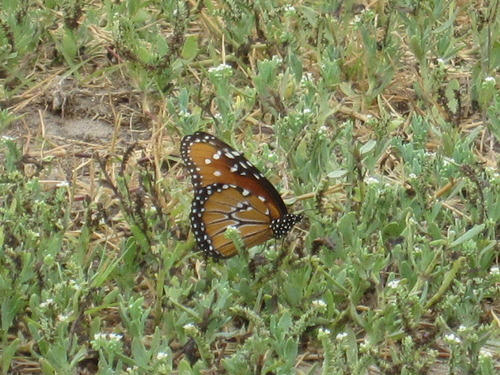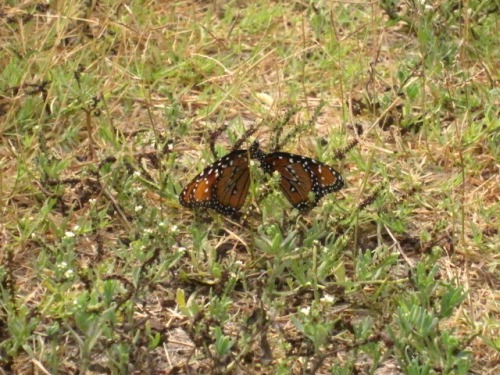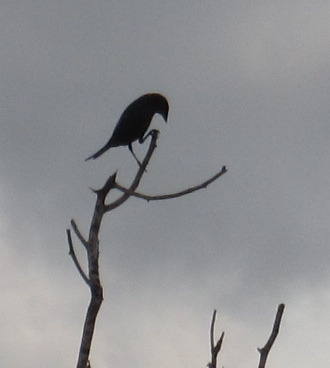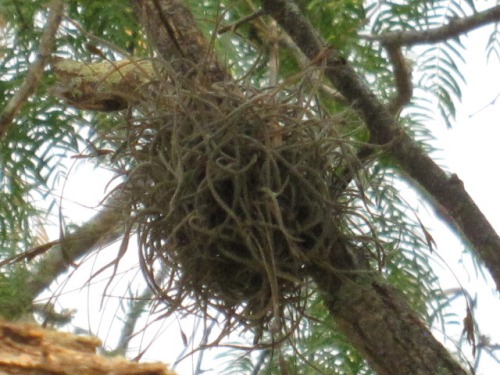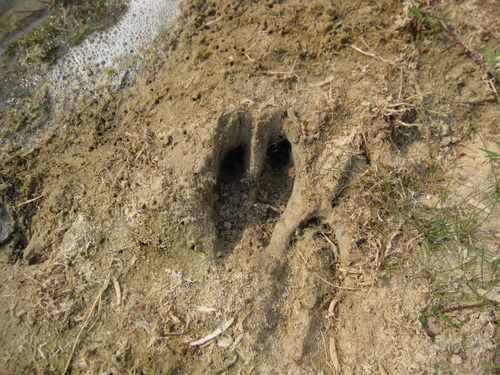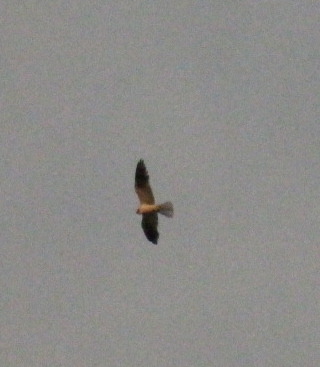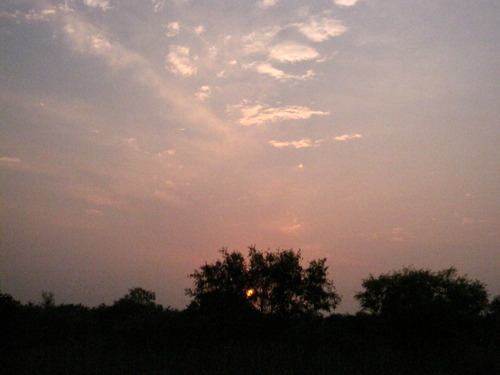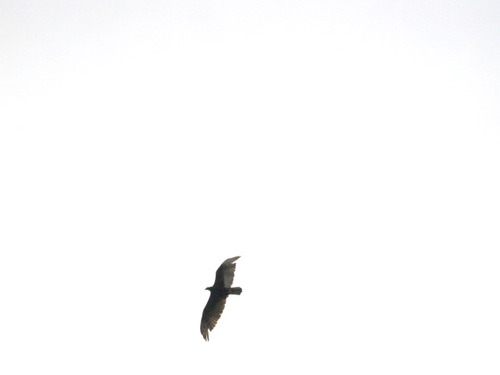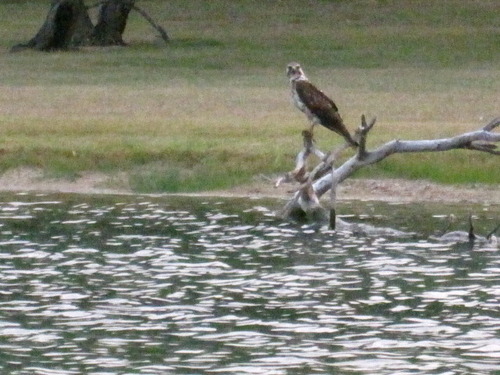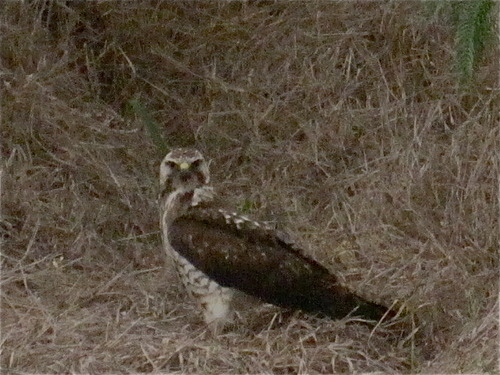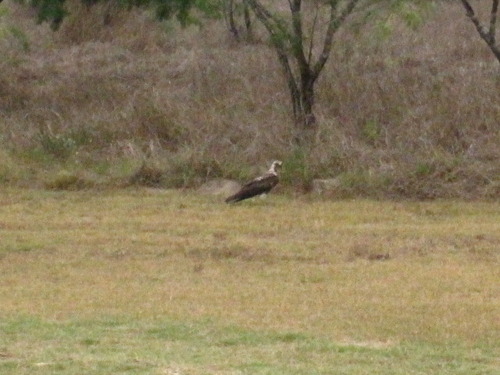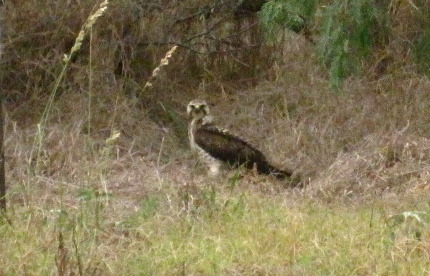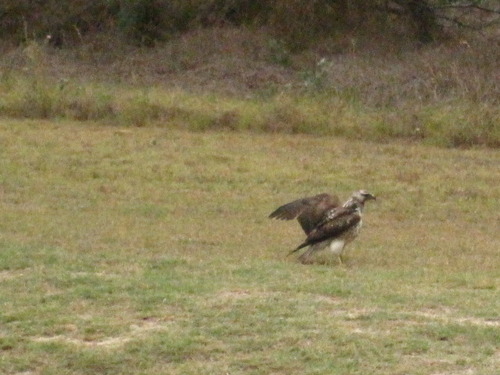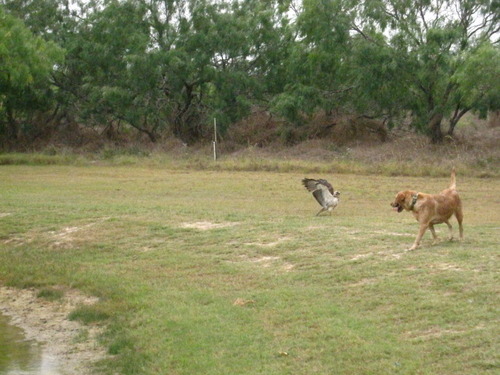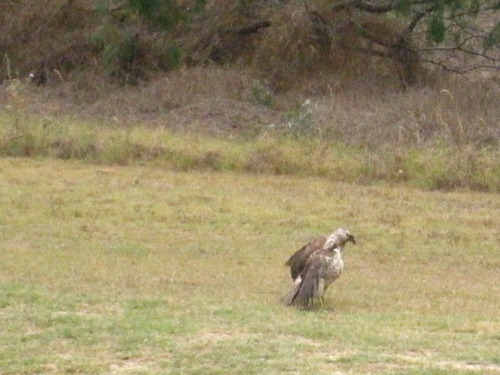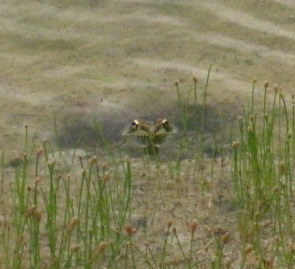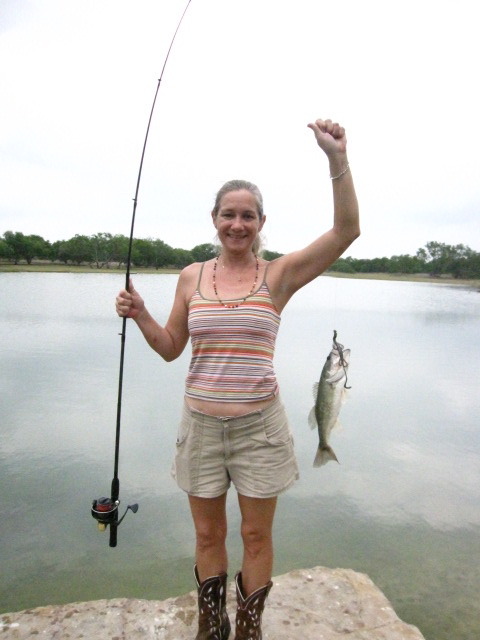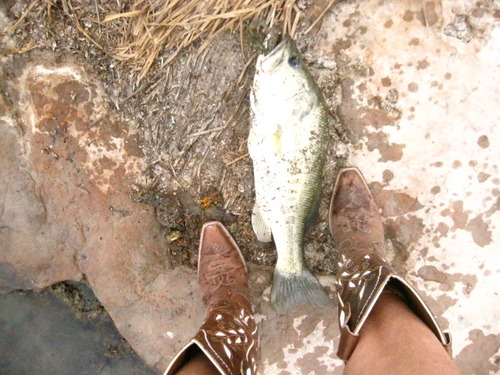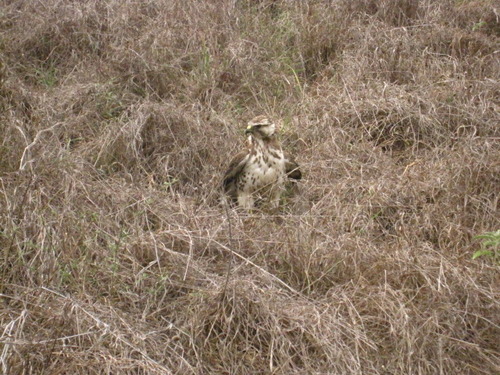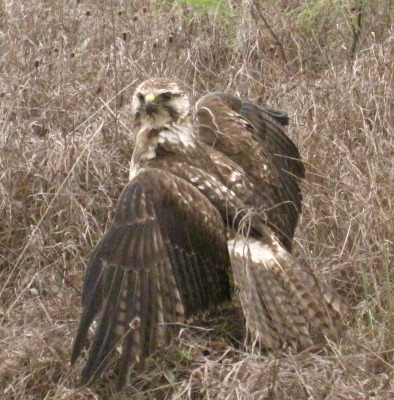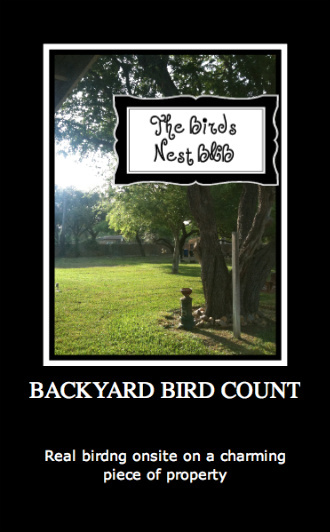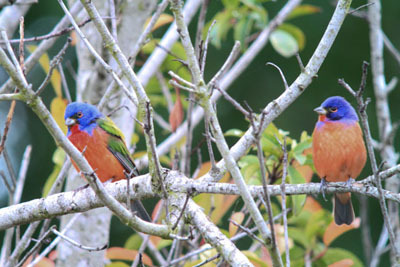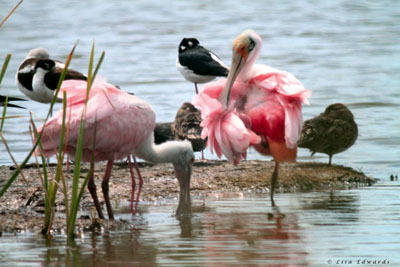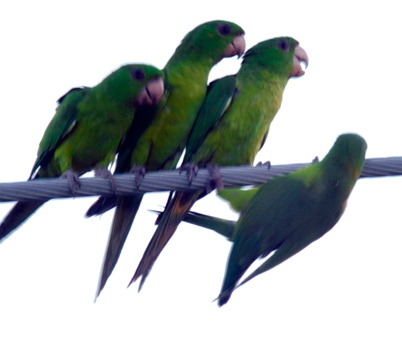More on this gorgeous raptor later in the article.
The conservation property that we partially own is 40 minutes from door to door, but worlds apart; from the hubbub of the city to the solitude of nature in a short 40 minutes. I go as often as I can, so when my friend from Corpus Christi called and said “let’s go the the ranch, right now.”
I said “ok” and soon found myself turning onto the long caliche road that leads to our ranch. The first thing I noticed was this bird’s nest.
I guess they will build anywhere that suits!
The obligatory hawk on the telephone pool, this time a Harris Hawk.
And the to-be-expected Diamondback Rattle snake, photo safely taken from inside the car, thank you very much — I have had more than one rattle snake “interaction” at the ranch and I try my utmost to stay away from them.
My friend was already there when I arrived and it was getting dark. So we turned in and but took a few clicks and the next day I got shots of a common garden snake, Couch’s Kingbird, monarch butterflies and a not-too-bad silhouette of a blackbird.
I found large Nilgai tracks at the lake. We saw a Altimira Oriole the entire time we were there, unfortunately no good pictures – although I did embarrass myself by including the very out of focus shot just to prove the Altamira sighting.
And lots of soaring raptors and vultures.
I went out on a four-wheeler to see what was around and as I turned the corner to the lake I ran into this guy. He immediately acted strange. First, he did not fly away when I got off the fou-wheeler and moved towards it. He never fly away from me. I assumed it was wounded. Then, my trained lab — Matty — saw me at the lake and ran down and challenged the raptor. He flew onto the limb in the lake, but was never more than a few feet off the ground and it wasn’t a long flight. I decided that it was best to leave it alone.
The next morning, I wanted to fish in my lucky spot at the lake and when I got down there I saw the same raptor again. I watched him chase a large toad toward the lake, but he missed it and once again did not fly away from me. I became even more concerned.
I called one of our area experts and asked if we had a raptor rescue facility nearby and he said that we do not. He referred me to the wildlife refugee at Santa Anna and I called them, they referred me to an individual who said “no” they would not take a raptor that could fly and proceeded to refer me to the game warden. Needless to say, I got nowhere. However, Ken Merritt, our expert, said that going after the toad would be unusual for what I thought this raptor species was, and he suggested it was likely an Osprey.
I left it alone, and started to fish. I quickly caught this bass, it is a catch and release lake, and one of the ranch hands was with me and this fish was promptly released back into the water. But then, the ranch hand left and I got to thinking that I could catch another fish and leave it for the Osprey, it would be an act of kindness, so I set out!
This was the monster that I caught. Clearly close to 15 inches and heavy. There really was a point when I thought I would not be able to land this fish, but I saw that it was big and I wanted it for the raptor so I fought hard. Once I caught it, I hurriedly took a picture and unhooked it to take it half way back around the lake to where I last saw the raptor.
When I got there, the raptor hoped away into the brush, but didn’t fly. I got as close as I could, while constantly on guard for those aforementioned rattlers and tossed the still flopping fish near it. We never go “into the brush at our ranch”! The raptor looked at the fish, but showed no other interest and again I believed that I needed to limit my interaction with the bird as little as possible.
I left and returned to the lodge and prepared to head back for home, bu checked one last time to see if the raptor had taken any more interest in the fish, but it appeared that it had not. I saw the raptor once last time as I turned to leave tucked up under an overhanging mesquite tree for shade. I tossed the now stiff and ant infected fish under the shade of the tree and said a small prayer of grace for the bird.
Once I arrived at home, I checked Cornel Lab’s webpage and now believe that what I saw wasn’t an Osprey at all but a Broad-winged Hawk — no wonder he didn’t like my fish.








